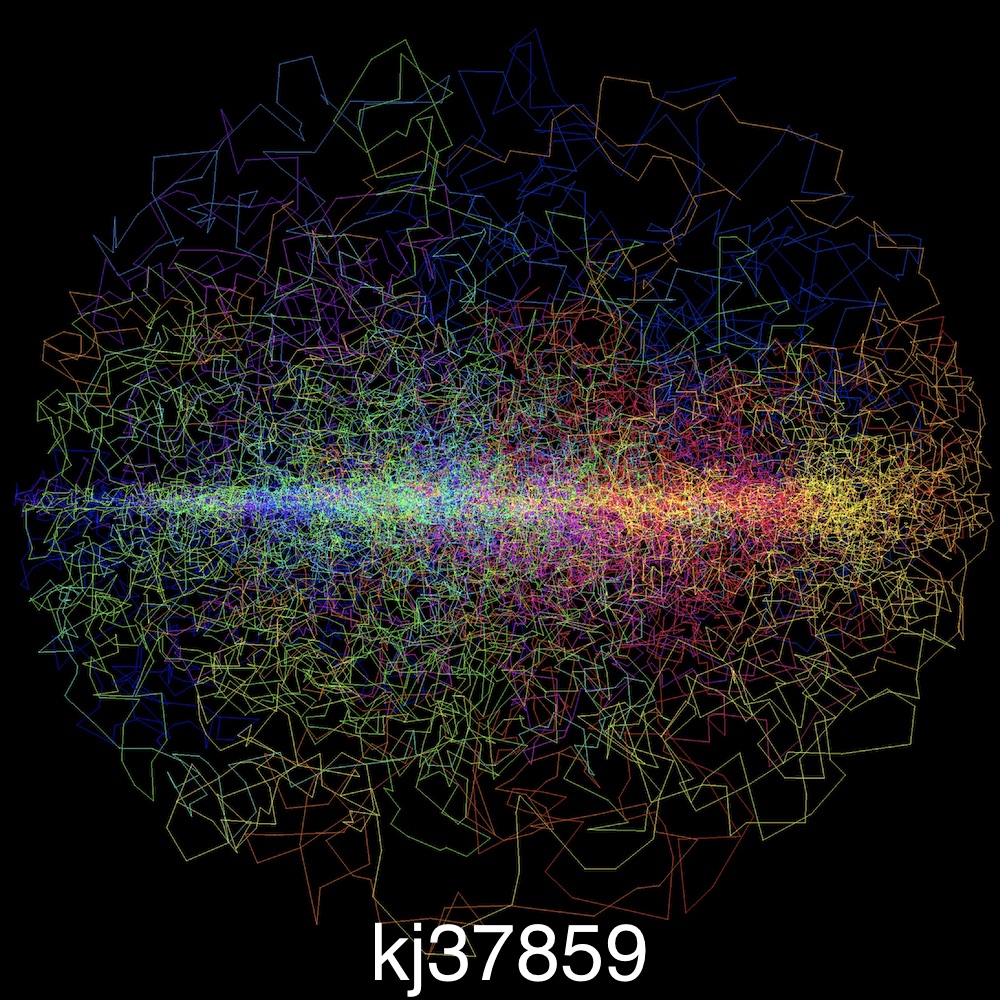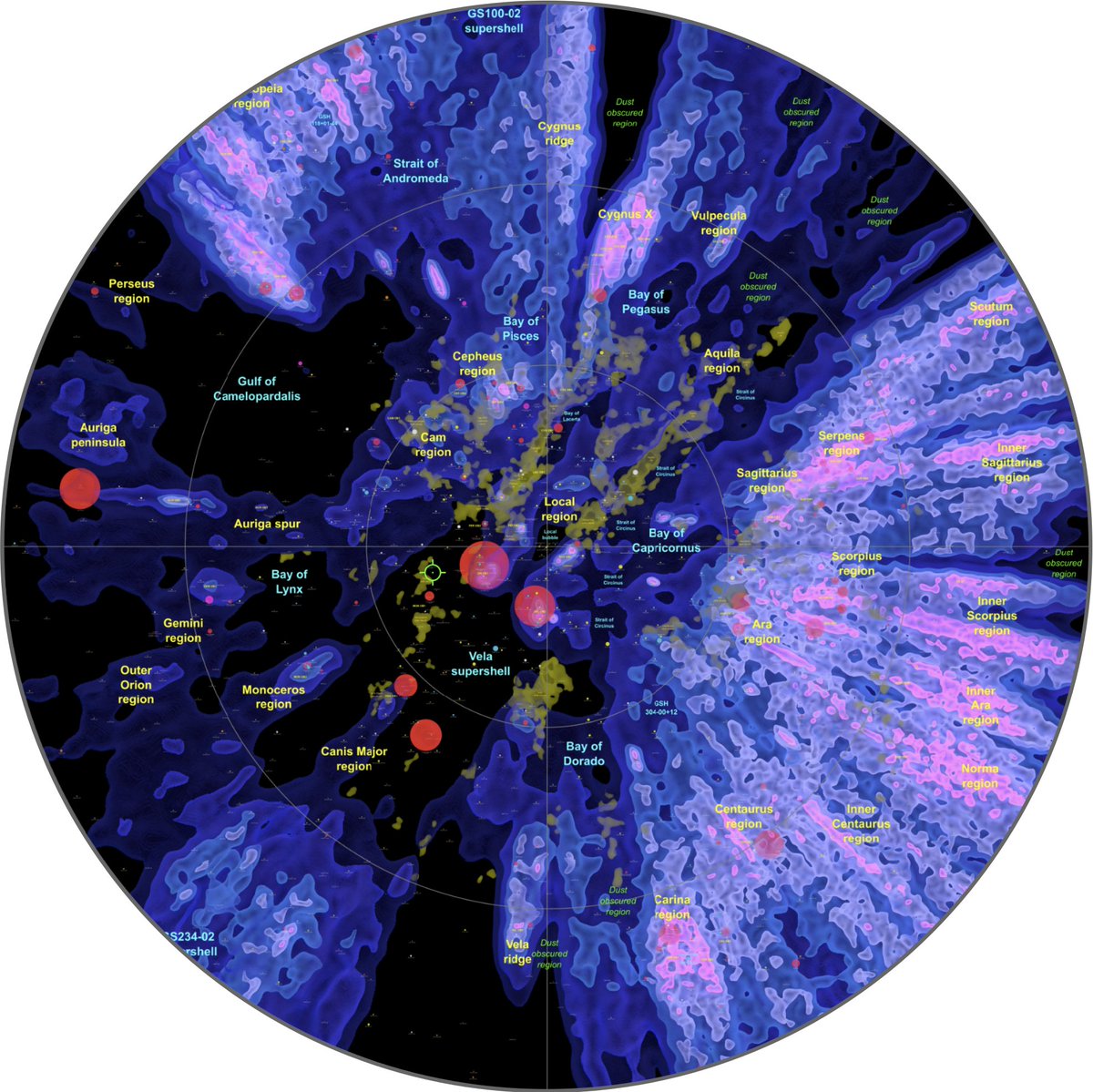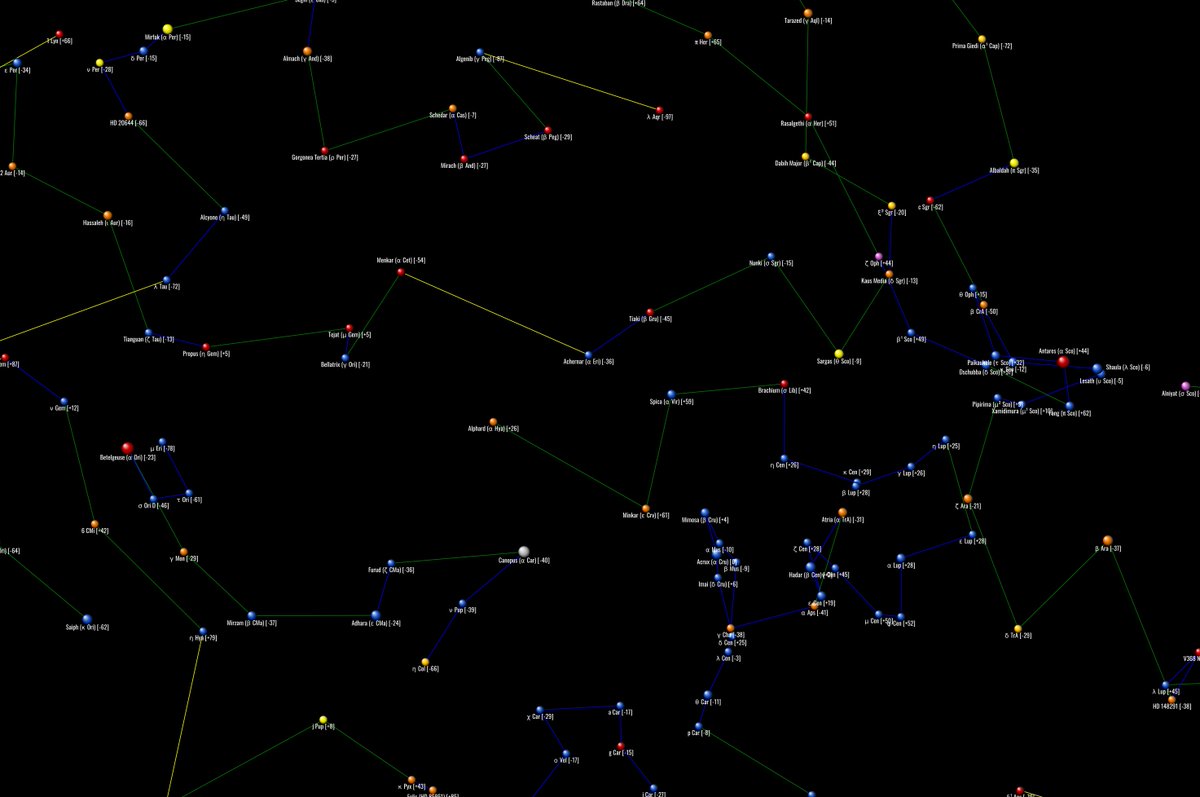A team of computer scientists are using Gaia-derived data and a supercharged travelling salesman algorithm called Concorde to compute minimal star routes. (See: http://www.math.uwaterloo.ca/tsp/star/index.html).">https://www.math.uwaterloo.ca/tsp/star/... They& #39;ve included my data set of luminous stars (abs. mag. < -2) here: http://www.math.uwaterloo.ca/tsp/star/kj37859.html">https://www.math.uwaterloo.ca/tsp/star/...
I released my luminous star data set in June and have not had a great deal of time to use it yet in my own maps so I was delighted to see it in use. As a reminder you can download the 37K star list in the form of two spreadsheets from this zip file: https://gruze.org/galaxymap/luminous/all_3kpc_luminous_merged.zip">https://gruze.org/galaxymap...
It goes out to 3 kpc and is built using the wonderful StarHorse data set when the 2MASS quality flag is AAA or otherwise from Gaia DR2 or (for a few close bright stars) Hipparcos. Here& #39;s a star density image (left) compared to a 3 kpc star map (right).
The Star Tours team are tackling the full 1.33 billion Gaia DR2 dataset using Bailer-Jones distances but that is so huge they can only approximate a minimal star route. My luminous star data set is small enough that they have proved that their tour is the shortest possible.
You can download their luminous star tour from the data page here: http://www.math.uwaterloo.ca/tsp/star/kj37859_data.html
I">https://www.math.uwaterloo.ca/tsp/star/... am looking to see if I can plot some of this on a flat map for stars close to the Sun.
I">https://www.math.uwaterloo.ca/tsp/star/... am looking to see if I can plot some of this on a flat map for stars close to the Sun.
As I& #39;ve pointed out before, ultra-luminous stars may not be the best place to look for habitable planets but might be key transport hubs for photon sailing ships. So this star route map seems very appropriate!
"Provide ships or sails adapted to the heavenly breezes, and there will be some who will brave even that void."
Johannes Kepler, letter to Galileo Galilei, 1608
Johannes Kepler, letter to Galileo Galilei, 1608
My apologies - I have just learned that some Mac software mangles xlsx files and converts floating point data to integers. I have replaced the xlsx files in the zip with csv. I have learned my lesson - csv is the universal format! Same link: https://gruze.org/galaxymap/luminous/all_3kpc_luminous_merged.zip">https://gruze.org/galaxymap...
Have been having fun experimenting with rendering star routes. The continous star route is embedded in a huge sphere of radius 3000 parsecs. I experimented with clipping this to a cylinder of radius 500 parsecs and height 100 parsecs above and below the galactic plane.
The result was 68 route fragments. The distances between the stars is reasonably short. In this coloured route map, blue is less than 30 parsecs, green less than 60 and yellow less than 90.
Sorry, Twitter made this last image unreadable. Link to full image here: https://gruze.org/galaxymap/luminous/routes.png">https://gruze.org/galaxymap...
One day I hope to restart work on my photon sailing board game and the route data should help in laying out a better map.

 Read on Twitter
Read on Twitter





